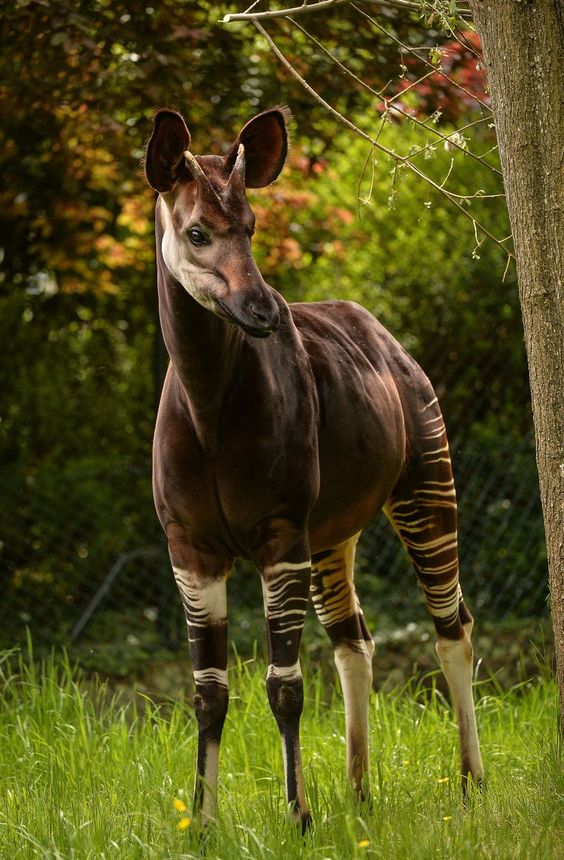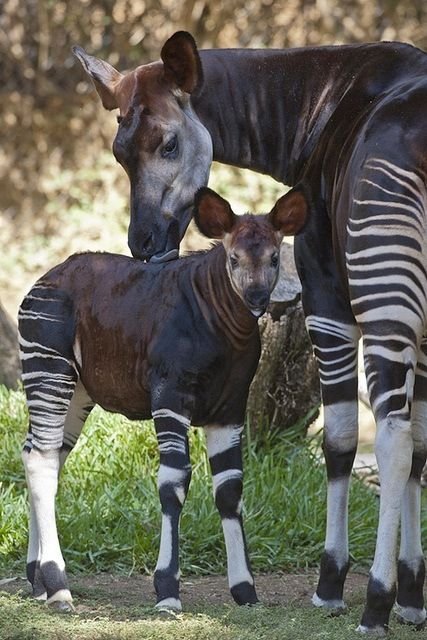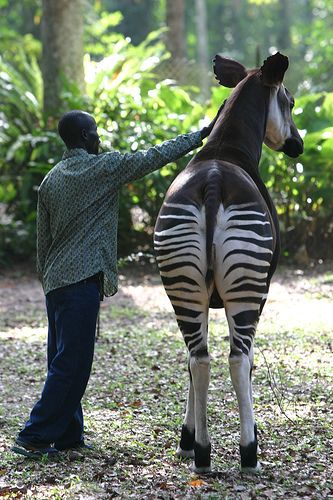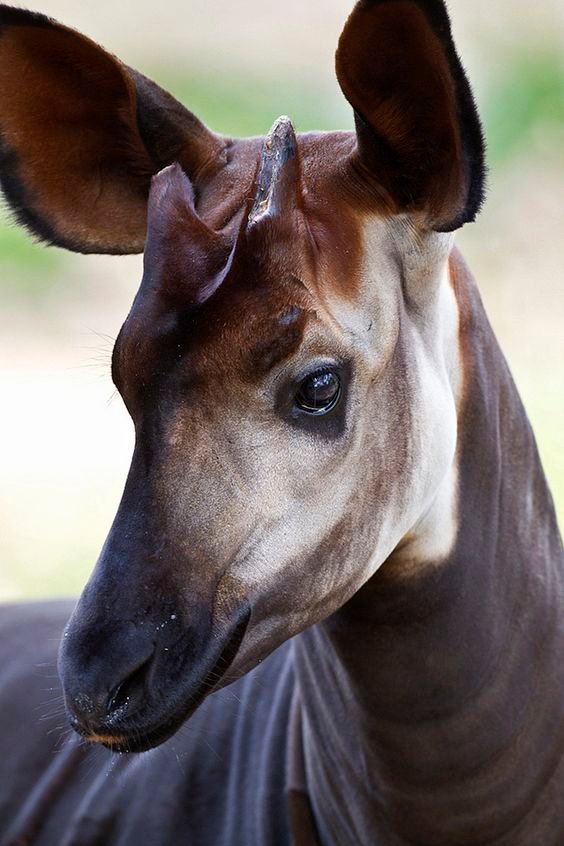
The okapi (Okapia johnstoni) is a mammal belonging to the Giraffidae family, being very close cousins of the Girafas. These animals are native to the dense forests of Africa and because of their fearful and elusive nature, research on this species is limited to the collection of feces or other signs evidencing their presence.

Remember by the shape of your body a small giraffe with very short legs and neck, although the hair is completely different, reddish all over the body except legs and buttocks, where it is white with black stripes, similar to a zebra. Like the giraffes, it has two small horns covered with hair on the head without apparent utility and a long black prehensile tongue that is used to introduce the leaves of shrubs and low trees in the mouth.
Okapis are predominantly solitary animals that occasionally live as a couple or in small family groups. Okapis are herbivores. They feed mainly on leaves, shoots and stems of more than 100 species of different plants, also eat herbs, fruits, ferns and fungi. Several of the species they consume are poisonous to humans. The impenetrable nature of its distribution area prevents us from knowing how many individuals the okapis population is really composed of. Despite this, it is considered a vulnerable species (although not in serious danger) due to its small distribution area.

The okapi was ignored in the West until 1890. Henry Morton Stanley, who explored the banks of the Congo River by mandate of the King of Belgium, wrote in his diary how strange it was to see how the natives of the northern part of the future Belgian Congo do not they showed the least astonishment at the horses he was carrying on his expedition. Questioned by the European explorer, the natives of the Wambutti tribe said that in the jungles of the area inhabited an animal similar to them but smaller, the o'api. The stories about this mysterious animal pushed the English Sir Harry Johnston to prepare an expedition that was in search of a possible species ignored by Science, which went back to the Congo River in 1899. Johnston could tell by the Wambutti that the o'api It was an animal similar to a reddish-brown donkey with black and white stripes on the legs and hindquarters. Initially he thought that it was a possible unknown species of zebra, as it was not known the existence of any in that part of Africa (or, indeed, any zebra that lived within the tropical forest).

The Okapi, as previously mentioned, are close cousins of the Girafas, belonging to the family of the Giraffidae, but, within this family, the Okapi is the animal that evolved least, remembering that all the animals departed from a point and then they were evolving according to the climatic or vegetative conditions, the living beings, we have always evolved to be able to survive, because this animal, either because it always lived in the dark jungles, is the animal with more genetic characteristics similar to the first Giraffidae, being considered a "living fossil", unfortunately, due to its shy nature, this investigation could not be more profound.